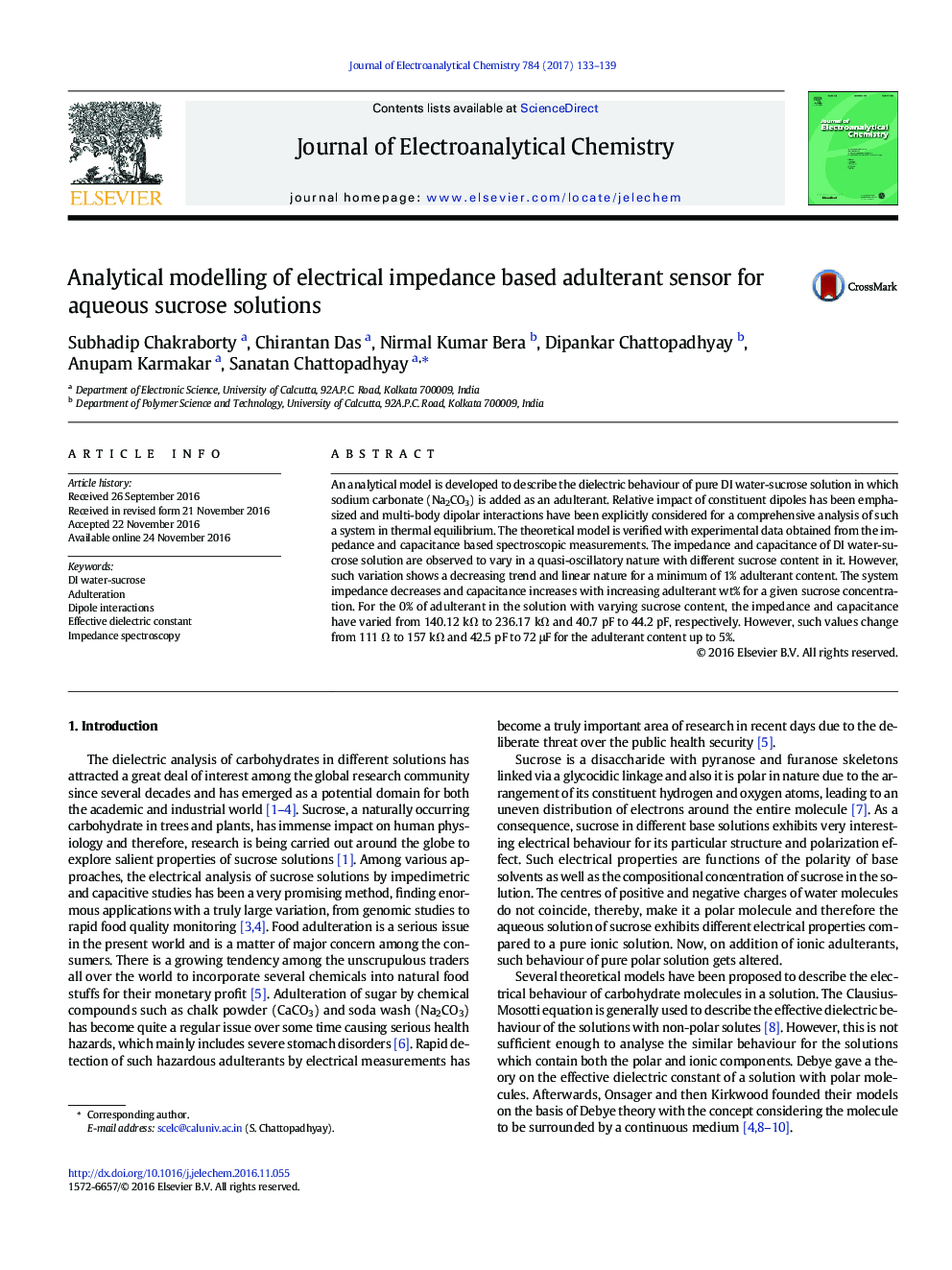| کد مقاله | کد نشریه | سال انتشار | مقاله انگلیسی | نسخه تمام متن |
|---|---|---|---|---|
| 4908057 | 1426591 | 2017 | 7 صفحه PDF | دانلود رایگان |
- Analytical model of dielectric nature of DI water-sucrose solution with adulterant.
- Multi-body dipole interactions have been studied for theoretical modelling.
- Variation of electrical parameters with adulterant concentration has been observed.
- Relative dominance of constituent dipoles controls overall dielectric nature.
- Quantitative estimation of adulterants in terms of dielectric polarization.
An analytical model is developed to describe the dielectric behaviour of pure DI water-sucrose solution in which sodium carbonate (Na2CO3) is added as an adulterant. Relative impact of constituent dipoles has been emphasized and multi-body dipolar interactions have been explicitly considered for a comprehensive analysis of such a system in thermal equilibrium. The theoretical model is verified with experimental data obtained from the impedance and capacitance based spectroscopic measurements. The impedance and capacitance of DI water-sucrose solution are observed to vary in a quasi-oscillatory nature with different sucrose content in it. However, such variation shows a decreasing trend and linear nature for a minimum of 1% adulterant content. The system impedance decreases and capacitance increases with increasing adulterant wt% for a given sucrose concentration. For the 0% of adulterant in the solution with varying sucrose content, the impedance and capacitance have varied from 140.12 kΩ to 236.17 kΩ and 40.7 pF to 44.2 pF, respectively. However, such values change from 111 Ω to 157 kΩ and 42.5 pF to 72 μF for the adulterant content up to 5%.
330
Journal: Journal of Electroanalytical Chemistry - Volume 784, 1 January 2017, Pages 133-139
